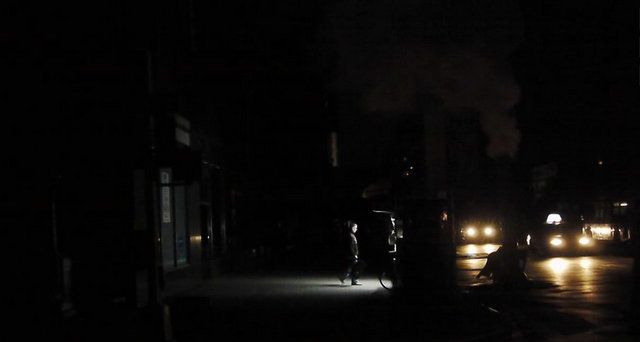Last-Minute NYC Holiday Gift Guide 🎁
We’ve created a holiday gift guide with presents for the intrepid New Yorker that should arrive just in time—


Still of Hurricane Sandy blackout video by Jeff Seal
Today marks the ten-year anniversary of the historic summer blackout of 2003 in New York City. Spreading across eight states in the USA, the blackout even hit parts of Ontario. 8.2 million New Yorkers were left without electricity for 29 hours and in total 50 million people were affected.
While there was a general attitude of calm amongst New Yorkers, that’s not to say that the effects were insignificant. Six deaths were attributed to the blackout while calls to 911 and hospitals soared. Moreover the disaster revealed that there were flaws in the grid system, making it vulnerable to disruption. One line, just south of Cleveland, Ohio touched an overgrown tree limb and short-circuited, leading to the catastrophic power outage that ensued.
So the question remains: what lessons did the city learn? And what steps have been taken to minimize the likelihood of repeating a wide-scale power failure?
All in all, the electrical grid has been thoroughly revamped over the last ten years. Mike Jacobs, a senior analyst at the Union of Concerned Scientists said at the time that the first priority was to make grid-reliability rules mandatory. The Federal Energy Regulatory Commission (FERC) now has the ability to impose serious fines for failing to comply with such standards.
Kelly McKinney of the New York’s Office of Emergency and Management (OEM) said that one of the top priorities has been working with Con Edison to ensure that electricity is constantly flowing throughout the city. Summer always sees a high demand for electricity in the Northeast so the company has spent millions of dollars ensuring that its infrastructure can cope with ever-growing demand .
Meanwhile, the New York Independent System Operator, responsible for running the New York grid, is in the process of installing a network of sensors to give more accurate readings of power outages. This will give operators time to adapt the systems to prevent an outage domino effect.
Much more money has also been spent on the grid itself. Software and data service firm, Ventyx has found that utilities spent three times more on station equipment between 2003 and 2012 than between 1994 and 2003. As a result, FERC notes that high-voltage transmission lines have been available for normal capacity 99.6% of the time with only two power losses occurring in the last three years.
The aftermath of Hurricane Sandy also pointed to impending work needed in New York City. Downed power lines and flooded transformers led to criticism of utility companies for failing to upgrade systems to handle extreme emergencies. Subsequently, Con Edison has been responsible for updating facilities such as replacing damaged transformers at the West Village Plant with waterproof ones.
All the money and work invested has paid off. Last month, the systems managed to cope, unscathed, with a record peak of13,161 megawatts of usage.
New York City also has a fleet of power barges to meet with peak demand. A floating power plant has also been proposed to provide backup power to critical structures in the case of such an emergency.
Although OEM officials say that they are in good stead to handle any blackout, power outages cannot, by any means, be prevented. Despite the city’s best efforts to overhaul the grid system and improve the efficiency of power structures, they cannot be made totally weatherproof or fool-proof. Burying overhead utility cables, for instance, can cost anywhere between $500 and $2 million per mile. Even then, they might still be prone to storm-surge flooding near the coast .
The city hopes, in time, to develop a more distributed grid reliant upon solar panels and local storage. Better batteries would give local businesses and utilities the chance to store electricity in an emergency while cheaper solar panels would give individuals more self-reliance to use their own electricity. This would create a more resilient and self-regulating grid where, as David Crane of NRG Energy put it, “our homes will not have to be tethered to aboveground electrical poles”.
For more information on the power structures of New York City, check out our articles about floating power plant barges and the 59th Street Power-station.
Read more from our Cities 101 series about how stuff works in the city.
Subscribe to our newsletter